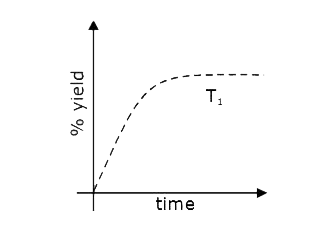Dinitrogen and dihydrogen react with each other to produce ammonia according to the following chemical equation:
N2(g)+H2(g)→2NH3(g)
a. Calculate the mass of ammonia produced if 2.00×103g dinitrogen reacts with 1.00×103g of dihydrogen.
b. Will any of the two reactants remain unreacted?
c. If yes, which one and what would be its mass?
1mol of N2, i.e., 28g reacts with 3 mole of H2, i.e., 6g of H2.
∴2000g of N2 will react with H2=628×200g=428.6g. Thus, N2 is the limiting reagent while H2 is the excess reagent.
2mol of N2, i.e., 28g of N2 produces NH3=2mol
=34g
Therefore, 2000g will produces NH3=3428×2000g
=2428.57g.
b. H2 will remain unreacted.
c. Mass left unreacted =1000g−428.6g=571.4g
Topper's Solved these Questions
- NCERT BASED EXERCISEBook:CENGAGE CHEMISTRYChapter:NCERT BASED EXERCISEExercise:Redox Reaction
Explore 25 Videos
- NCERT BASED EXERCISEBook:CENGAGE CHEMISTRYChapter:NCERT BASED EXERCISEExercise:Atomic Structure
Explore 94 Videos
- ISOMERISMBook:CENGAGE CHEMISTRYChapter:ISOMERISMExercise:Assertion-Reasoning Type
Explore 1 Video
- ORGANIC REACTION MECHANISMBook:CENGAGE CHEMISTRYChapter:ORGANIC REACTION MECHANISMExercise:Analytical and Descriptive
Explore 6 Videos
Similar Questions
Dinitrogen and dihydrogen react with each other to produce ammonia according to the following chemical equation:
N2(g)+3H2(g)→2NH3(g)
a. Calculate the mass of ammonia produced if 2.00×103g dinitrogen reacts with 1.00×103g of dihydrogen.
b. Will any of the two reactants remain unreacted?
c. If yes, which one and what would be its mass?
View SolutionThe heat change for the reaction,
N2(g)+3H2(g)→2NH3(g)
is -92.2kJ. Calculate the heat of formation of ammonia.
View Solution
Knowledge Check
Which of the following is correct for the reaction? N2(g)+3H2(g)→2NH3(g)
AKP=KcBKP<KcCKP>KcDPressure is required to predict the correlationWhich of the following is correct for the reaction?
N2(g)+3H2(g)⇔2NH3(g)AKp=KcBKp<KcCKp>KcDPressure is required to predict the correlationWhich of the following is correct for the reaction?
N2(g)+3H2(g)⇔2NH3(g)AKp=KcBKp<KcCKp>KcDPressure is required to predict the correlation
For the chemical reaction
N2(g)+3H2(g)⇔2NH3(g)
The correct option is:
View SolutionThe % yield of ammonia as a function of time in the reaction N2(g)+3H2(g)⇔2NH3(g),(g)ΔH<0 at (P,T1) is given below

View SolutionFor the chemical reaction
N2(g)+3H2(g)⇔2NH3(g)
The correct option is:
View SolutionFor the chemical reaction
N2(g)+3H2(g)⇔2NH3(g)
The correct option is:
View SolutionWhich one of the following equation is correct forr the reaction : N2(g)+3H2(g)→2NH3(g) ?
View Solution

